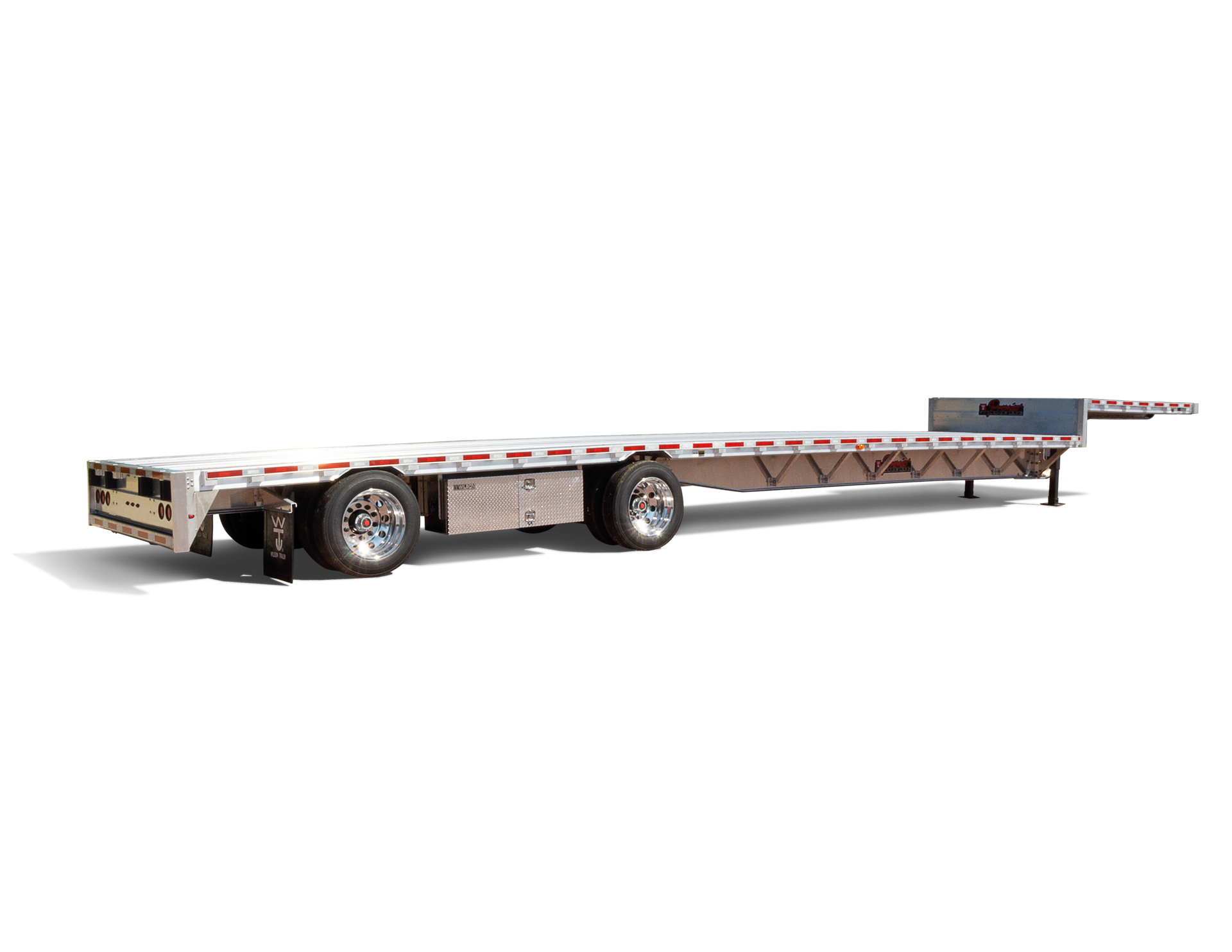What Is a Step-Deck Trailer? Everything You Need to Know
When it comes to hauling tall or oversized freight, not every trailer will do the job. That’s where step-deck trailers come in. Also known as drop-deck trailers, these versatile trailers are designed to safely and efficiently transport loads that exceed standard height restrictions.
If you’re wondering what a step-deck trailer is, how it compares to a flatbed, and when it’s the right choice for your business—this guide has you covered.
What Is a Step-Deck Trailer?
A step-deck trailer is a type of flatbed trailer that features two deck levels: a top deck (also called the upper deck) and a lower deck. The transition between the two levels creates a “step” in the trailer’s profile, hence the name.
This design allows taller loads to be hauled without exceeding the maximum height limit (typically 13’6” in most states), which would not be possible on a standard flatbed.

Key Features of Step-Deck Trailers
- Dual Deck Heights
- Top deck: Usually 5 feet high
- Lower deck: About 3 feet, allowing more vertical clearance for taller freight
- Load Capacity
- Step-decks can typically handle up to 48,000 pounds of cargo, depending on the model and axle configuration.
- Length
- Common lengths range from 48 to 53 feet, similar to flatbeds.
- Ramp Capability
- Many step-decks can be fitted with ramps for easy loading of equipment like forklifts, tractors, or construction vehicles.
What Is a Step-Deck Trailer Used For?
Step-deck trailers are ideal for transporting tall, heavy, or irregularly shaped equipment that can’t be hauled on a flatbed without exceeding height restrictions. Common uses include:
- Construction equipment (e.g., excavators, bulldozers)
- Agricultural machinery
- Large industrial components
- Crated machinery or tall pallets
- Building materials (e.g., steel beams, prefab walls)
Because of their lower deck height, step-deck trailers allow for legal transport of taller loads without the need for special permits, making them both practical and cost-effective.
Step-Deck vs. Flatbed: What’s the Difference?
| Feature | Step-Deck Trailer | Flatbed Trailer |
| Deck Levels | Two (upper + lower) | One uniform deck |
| Height Clearance | More vertical space on lower deck | Less vertical space |
| Load Types | Taller or irregular equipment | Standard freight and equipment |
| Ramp Option | Often compatible with ramps | Requires additional gear |
| Permit Requirements | Fewer for tall loads | More for overheight loads |
Benefits of Using a Step-Deck Trailer
- Haul taller loads legally without permits
- Safer loading and unloading with ramps
- Versatile across many industries
- Reduced risk of damage during transport
- Improved fuel efficiency compared to enclosed trailers
Whether you need a step-deck trailer for a short-term project or a long-term contract, Great Western Trailer has you covered. We offer rental, leasing, and lease-to-own options on a wide range of trailer types—including step-deck, flatbed, lowboy, and more.
Our fleet is inspected and maintained to ensure safety, compliance, and reliability for every haul.
If you’re not sure whether a step-deck is right for your freight, our experienced team can help. Call or visit your nearest Great Western Trailer location or check out our inventory online at www.greatwesterntrailer.com.
Step-deck trailers offer flexibility, legality, and safety—making them a smart solution for tall or oversized loads.
About Great Western Trailer
Since 1997, Great Western Trailer has been a trusted name in the semi-trailer industry. We proudly serve customers across 10 locations in the United States, offering Sales, Rentals, Leasing, Parts, Service, and Repairs.
Find us at: Phoenix, AZ – Fontana, CA – Dearborn, MI – Albuquerque, NM – Oklahoma City, OK – Tulsa, OK – Grants Pass, OR – Dallas, TX – Houston, TX – Salt Lake City, UT.

